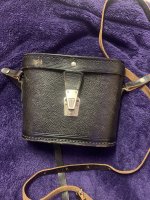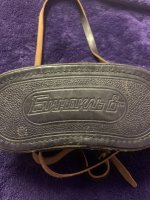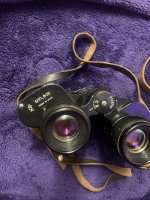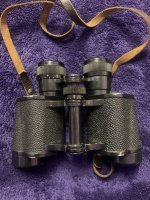I have 4 of these and the newer version that was also sold by "Levenhuk" as "Heritage"-model but also made by Komz. The new one is actually pretty good because of the upgraded coatings but the build quality is not quite up to the older USSR models. I'm guessing the tooling and machinery might be worn down by now.
I also own the 6x24, 10x40 and 12x45. The 6x24 is probably the most interesting as it is a super wide angle and no longer made. Also excellent quality with coated prisms and all.
The old 8x30 is okay but also "nothing to write home about". But I did want to compare the different coatings -- the more purple ones and the other ones as some claimed the purple coatings were better which turned out to not be true. They are more or less the same. In fact the newer one I own (from '91) is slightly sharper so Komz seems to have actually tried (and succeeded) to improve them over time.
One of the 8x30s I have was misaligned but it looked like someone had driven a car over it so badly warped was the body. The seller had hid this fact by not showing it from every angle but I kept it as a spare for parts as it wasn't expensive.
One of them rests on the window sill in the kitchen. I had a more modern roof prism there for a while but the rubber coating now smells like frying fat. So that was a bad idea

. (Note to self: don't keep rubber coated binos in the kitchen.)
All in all -- for anyone interested in buying a used one -- don't overpay. Between 30-60€/$ in good condition is okay. But the new one with upgraded coatings was only 100€ for which it is absolutely fine and definitely better for actual use.
But the real gem of the Komz line-up besides the 6x24 is the 7x30 military model (also made in 10x42 but no longer available for obvious reasons). No comparison to the others, flat field design with huge 7-element oculars (6 elements according to other sources but I think that's because one element seems to be actually cemented from two lenses). The 8x30 has 5 element oculars. I only know this because it is actually stated on the outside of some of them that were sold in Germany "5-Linser" which translates to "5 lenses".
I also once accidentally bought a fake one, they normally sell on Aliexpress -- mine was used from ebay and I didn't notice. Differences are -- the originial focuses clock-wise, the fake counter clockwise. Also the fake has a slightly larger FoV, more reflections but better coatings than the old USSR ones and the ocular bridge is plastic unlike on the original.
If everything works as it should and there is no fungus or dust inside (there rarely is as the "black goo" is used to seal it and there are felt rings on the ocular turrets to keep dust and moisture out which seems to work just fine) -- then they don't really need to be serviced.










